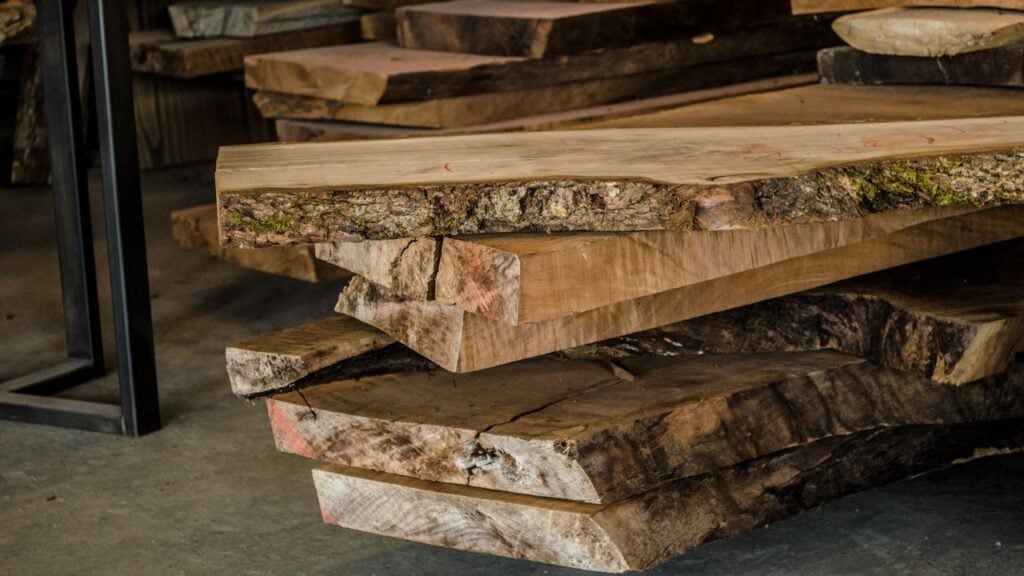Mastering the Craft: Tips for Working with Slabs of Wood

Working with slabs of wood presents a unique set of challenges and opportunities for woodworkers. These large, natural pieces offer stunning grain patterns and character, but they require special care and attention to detail to transform them into beautiful, functional pieces. Here are some invaluable tips to enhance your woodworking experience when dealing with slabs of wood.
Selecting the Right Wood:
Begin your project by carefully choosing the slab. Look for pieces with well-balanced moisture content to avoid warping or cracking. Pay attention to grain patterns, figure, and any potential defects. Properly dried and stable slabs will yield better results in the long run.
 Stabilize and Flatten:
Stabilize and Flatten:
Before diving into your project, ensure the slab is flat and stable. Use a jointer or hand planes to flatten the surface, addressing any irregularities or twists. This step is critical for achieving a level and structurally sound final piece.
Moisture Content Management:
Wood movement due to changes in moisture content is a common issue. Acclimate your slabs to your workshop environment for several weeks before starting your project. Additionally, seal the ends of the slab to prevent uneven moisture absorption and subsequent warping.
Invest in Quality Tools:
Working with large slabs often requires heavy-duty tools. Invest in quality equipment such as a sturdy router, powerful planer, and a reliable table saw to handle the size and density of slab wood effectively. Proper tools contribute to cleaner cuts and more precise joinery.
Understanding Grain Orientation:
Pay close attention to the direction of the wood grain. This factor affects how the wood will expand and contract. Orient your cuts and joinery to minimize the impact of seasonal changes on the slab, ensuring stability and longevity.
Consider Butterfly or Bowtie Inlays:
Slabs are susceptible to developing cracks, known as “checks.” To stabilize and add an aesthetic touch, consider incorporating butterfly or bowtie inlays made from contrasting wood. These inlays not only prevent further splitting but also enhance the visual appeal of your project.
Use Proper Joinery Techniques:
Choose joinery methods that accommodate the unique characteristics of slabs. Mortise and tenon joints, dovetails, and floating tenons are excellent options for securing large pieces of wood, providing both strength and visual appeal.
Finishing for Enhancement:
Select a finishing method that accentuates the natural beauty of the wood. Oils, varnishes, or epoxy resin finishes can enhance the grain patterns and provide protection. Consider experimenting with different finishes on scrap pieces to find the one that best complements your slab.
Practice Patience:
Working with slabs requires patience and attention to detail. Take your time, make careful measurements, and be prepared to adapt as needed. Rushing through the process may lead to costly mistakes and compromise the final result.
Safety First:
Slabs can be heavy and unwieldy. Prioritize safety by using proper lifting techniques, securing workpieces effectively, and wearing appropriate protective gear.

By incorporating these tips into your woodworking routine, you’ll not only master the art of working with slabs but also create stunning, enduring pieces that showcase the natural beauty of wood. Approach each project with care and precision, and you’ll be rewarded with functional and aesthetically pleasing creations.
Comments
Add comment